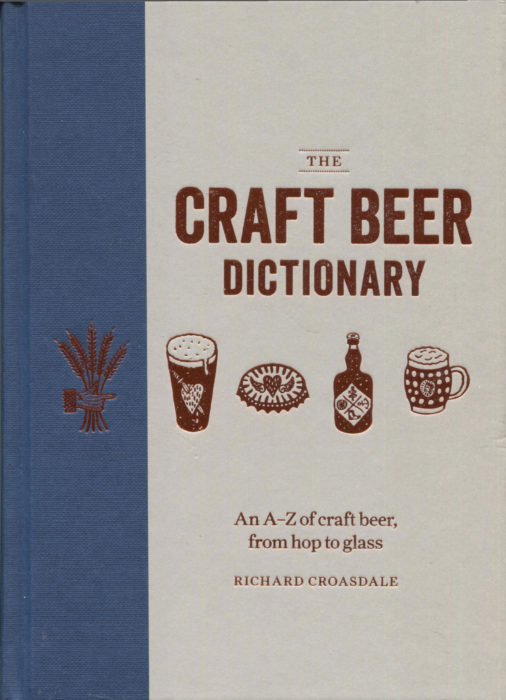
Richard Croasdale grew up in an English town where the local pubs served rounds and rounds of commercial beer: Carlsberg, Heineken, and Stella. When he moved to Scotland, he discovered a new world of local beers. Craft beers. He was hooked and travels the world to investigate this brave brew world. He writes about it his craft beer magazine, Ferment. And now, in this book, he provides a guide for all of us who may be overwhelmed, if not confused, by this beverage blitz.
This book, The Craft Beer Dictionary, is part of the Dictionary Series from Mitchell Beazley. Previously they gave us The Tattoo Dictionary, which I did not review. Earlier this year I did tell you about The Gin Dictionary by David T. Smith. This volume devoted to craft beer is equally impressive and helpful.
Okay, you are wondering. What is craft beer? It isn’t Carlsberg or Heineken or Stella. To paraphrase a Supreme Court judge, it’s tough to define but you know it when you taste. Small scale, devoted producers, and no gimmicks. Lavender does not make a beer crafty. But, you already knew that [ or learned it after that one ghastly sip!].
This volume has 250 pages devoted to the full range of beer topics you may encounter. Yes, there are entries there for the basics: fermentation, hops, pub, water. Ah, water is an ingredient of beer a key one as any of those Colorado beer commercials will tell you.
Here are some sample topics presented in The Craft Beer Dictionary, topics that you do want to understand to gain full knowledge of that golden brew:
Bock: a distinctly German family of beverages that share a sweet malt profile with a hint of hops and a very full, satisfying body; there is even an eisbock that is partially frozen after fermentation to remove some water content and concentrate the alcohol, up to 14 percent.
Esters: Yes, esters, not Easters, are chemical compounds formed during fermentation; they are complex and must be produced in a careful manner; too much and your beer is bizarre.
Schooner: not a boat but an old measure of volume, about 1 ½ cups
Sparge: sparging is vital beer brewing; it’s the washing away of sugars from the bass to get the sweet malty liquid called wort [yes, wort is in the book too!]
Wee Heavy: a dark barley wine-link beverage that is sweet, rich, and has a toffee taste
Beer may be basic but is not simple. It’s an amazing story of human experimentation and, along with wine, the basis for modern chemistry. Yes, some of the topics here are chemistry for the rest of us. And there is a barrel of information for us who sip and wonder “how and why.” The answers are here, and your beer enjoyment can only be enhanced.
If your interest is in ingredients or techniques or brewing methods or beer styles, the answers are here for you. Pull up a chair, grab a beer, and enjoy.

Thanks for the review Brian. Glad you enjoyed the book 🙂